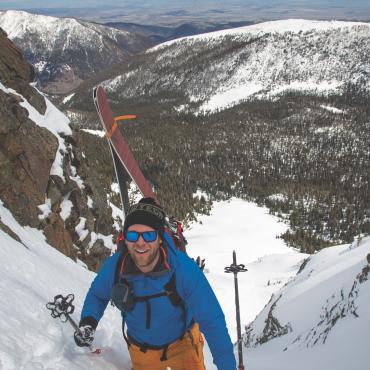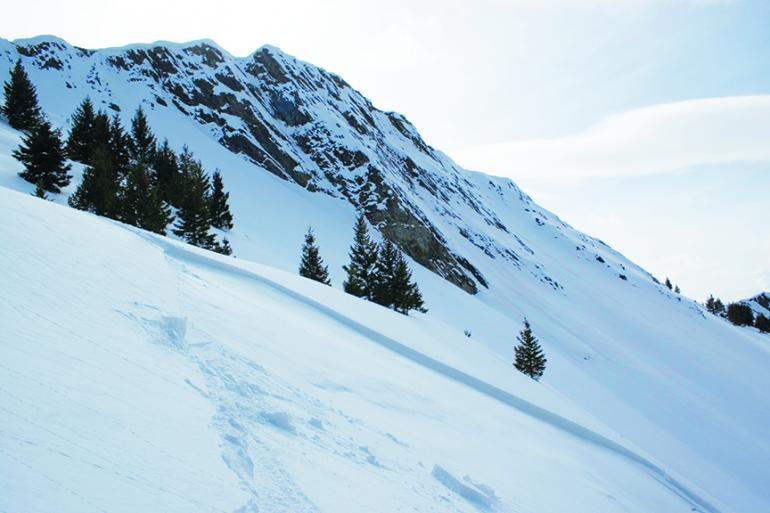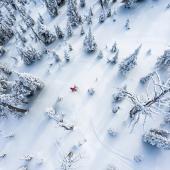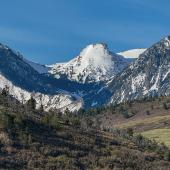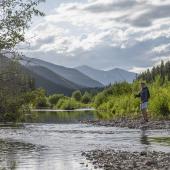Riding the Madison Slide
Re-visiting history above Quake Lake.
Shuddering, rumbling, groaning, the mountain fractured and the slide began. Minutes later, amid terrible chaos, 28 people were dead and a landscape was transformed. Now, almost 50 years later, I shuffle my skis and look down at the snow-covered gash and the slumping earthen debris pile still clogging the canyon far below. A cool wind at my back pushes me forward as I prepare to drop into the slide.
No avalanche, the Madison landslide was triggered on an August night in 1959 by a 7.5 Richter earthquake. Families and sportsmen camping below, along the placid banks of the Madison River, had no warning and no chance of escape when 80 million tons of mountainside sheared off and crashed downward at 100 miles per hour. The stone tsunami pushed 400 feet up the north side of the valley and dammed the river above the slide, forming Earthquake Lake. With subtle skeletons of a former forest still protruding from the surface, 190-foot deep “Quake Lake” is a reminder of the tragedy and a tomb for those buried beneath the jumbled tons. Today it is also the backdrop for a ski descent of the infamous slide.
The scale of the Madison Slide is incredible. Standing at the broken summit, it’s difficult to imagine the entire mountainside releasing and crashing downward. What a sound it must have made. The scar seems fresh even five decades years later, as few trees grow on the mostly raw dolomite surface. Topping the sharp ridge, sagebrush grows right up to the brink on the gently sloping south side. Where the sage ends is a ragged vertical drop to the north, an earthen crown where the mountain fell. It’s disconcerting to stand on this edge, to think of the violent, turbid flow of rocks and forest descending to the canyon floor 1,300 feet below, plunging into and completely obscuring the river.
The snowpack is thin, and the surface is a strange mix of windblown cream, light powder, and dense breakable chalk; the skiing is more education than recreation. But I’m not here for the snow. I’m here for this singular place, a tangible reminder of nature’s power and the fragility of human life. Struggling to link aesthetic turns, I smile slightly in spite of myself.
I slash a cautious turn at the brink of a steep rollover, and without warning the mountain moves once again. Between my feet shoots an arcing crack and with a low rumble, the avalanche releases. I take a desperate, lunging step uphill and watch as a slab three feet thick accelerates with incredible velocity. Giant blocks of snow liquefy as they roar downhill and come to rest, filling a previously unseen moraine with a dozen feet of rubble. I’m safe, standing on a new 350-foot avalanche crown. The slide scoured the ground, exposing wickedly sharp, unweathered scree on which I would have been eviscerated before being buried hopelessly deep. My partner and I carefully make our way to the safety of the timber at the edge of the slide and ski to the base unscathed. Looking up at my near miss, the duality is striking; a slide upon a slide. Revealed by the peeling layers of snow is the same mountain that roared down on helpless campers a half century ago, and despite the adrenaline still pounding in my chest, I see it is as beautiful as it is terrible, this Madison Slide.
This article first appeared in Backcountry magazine.

